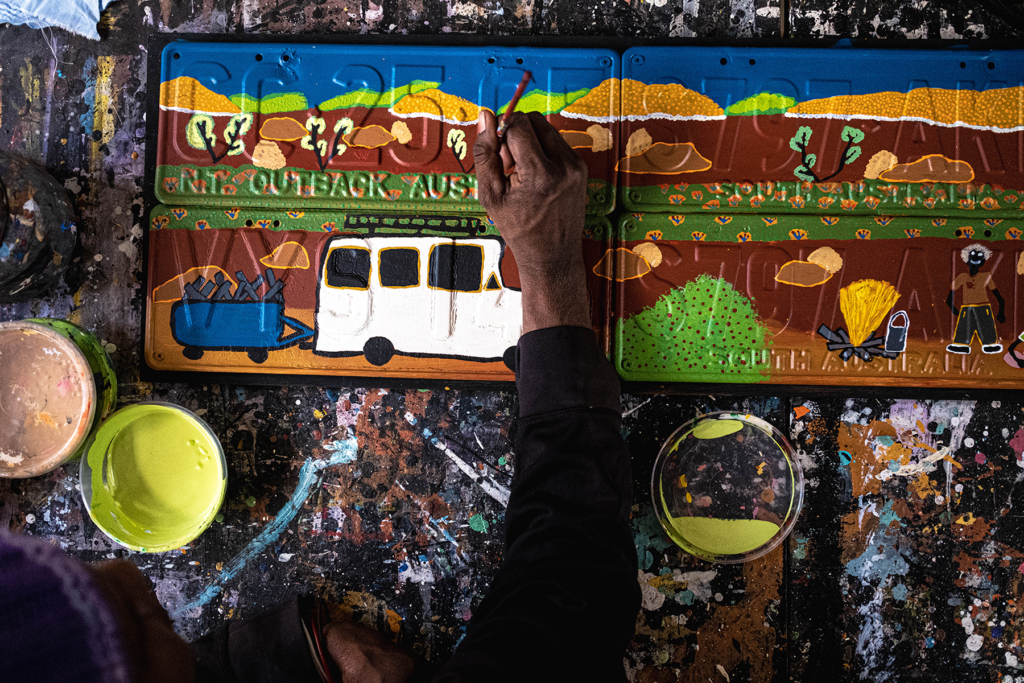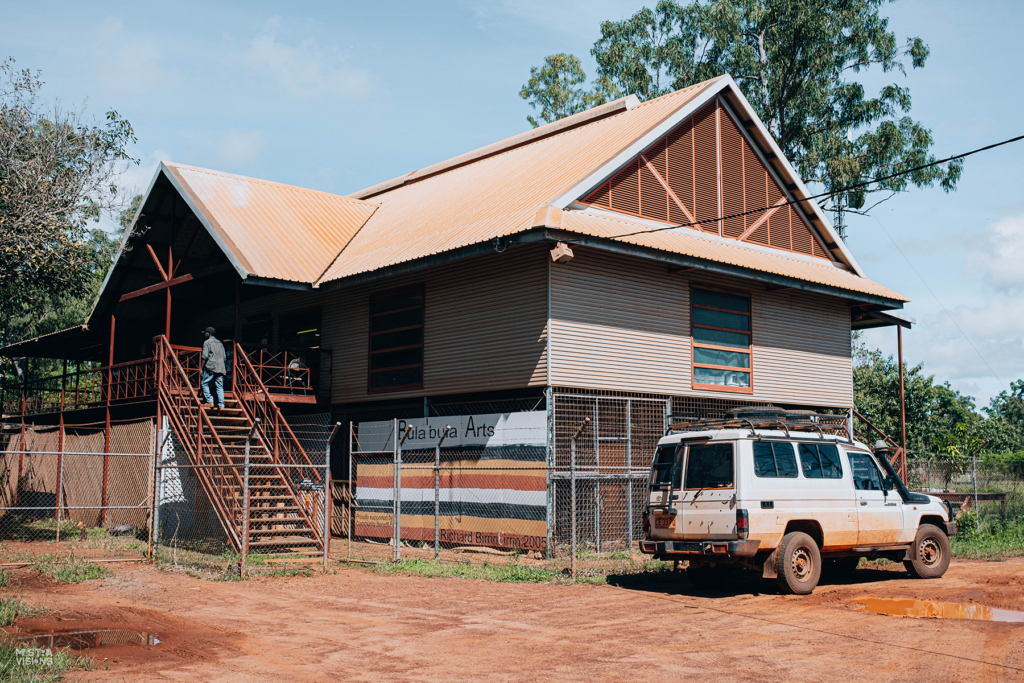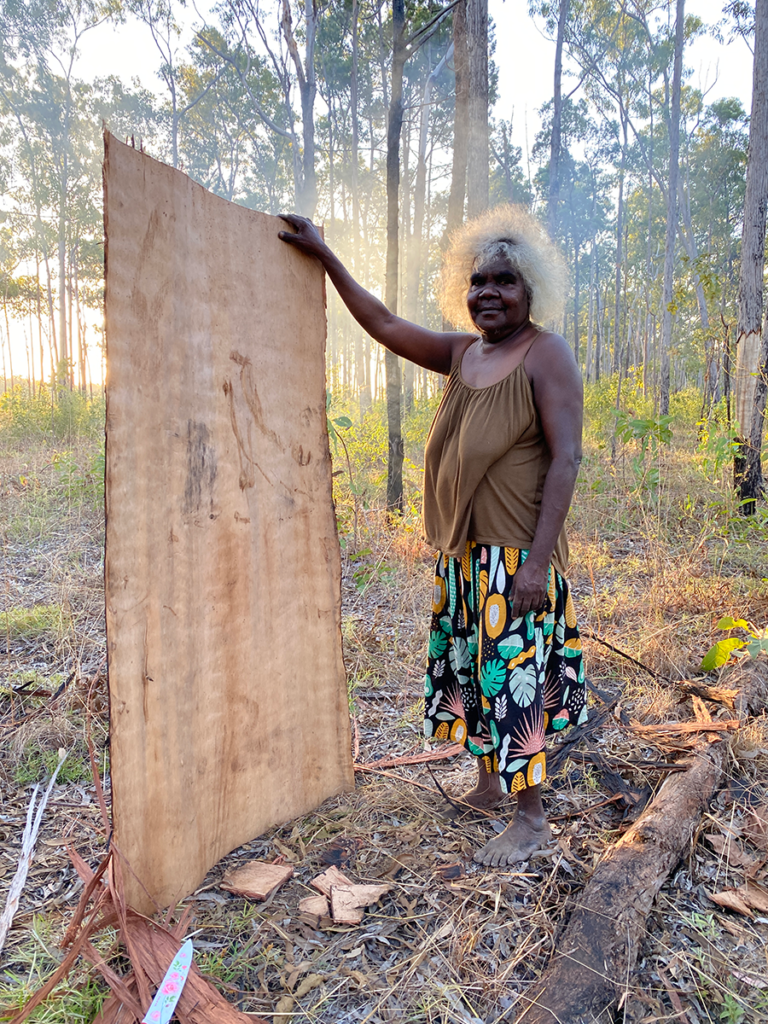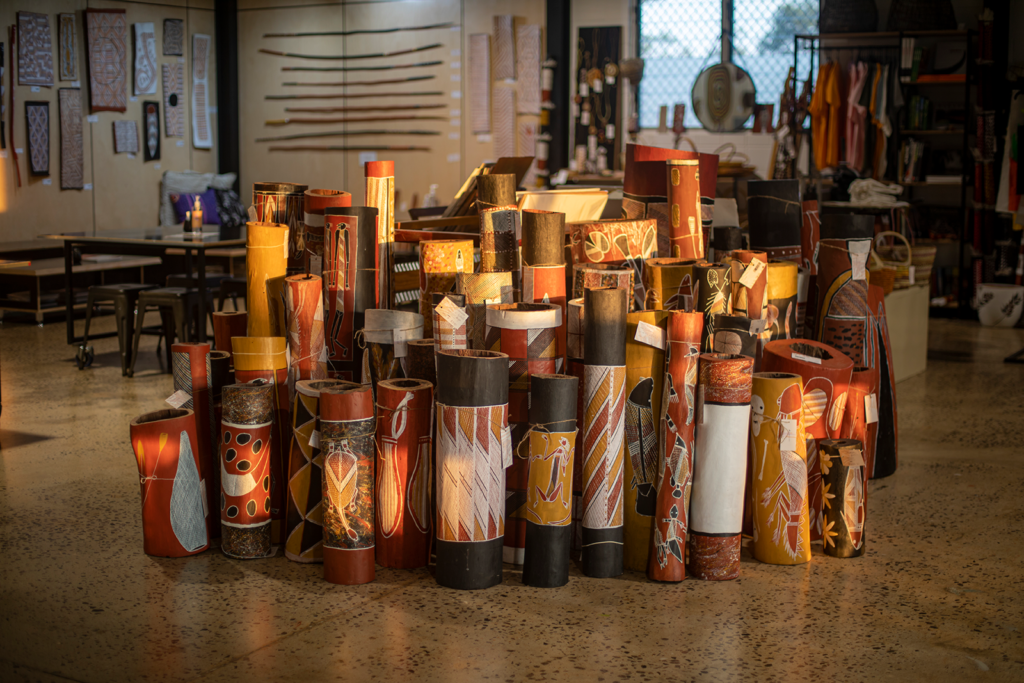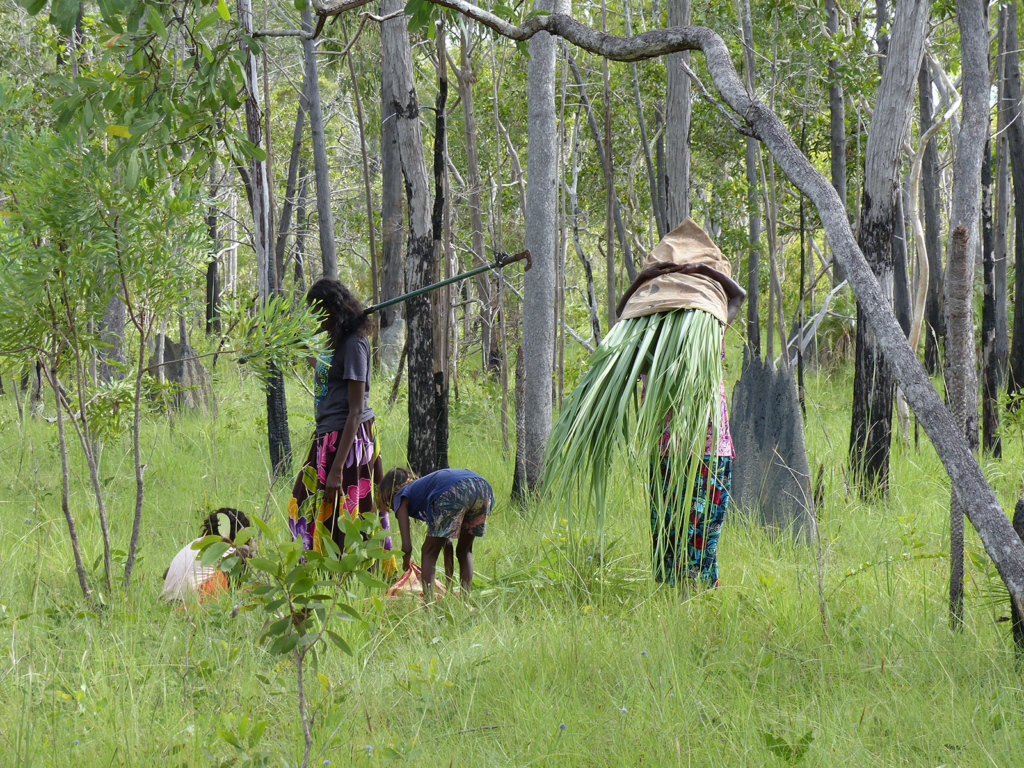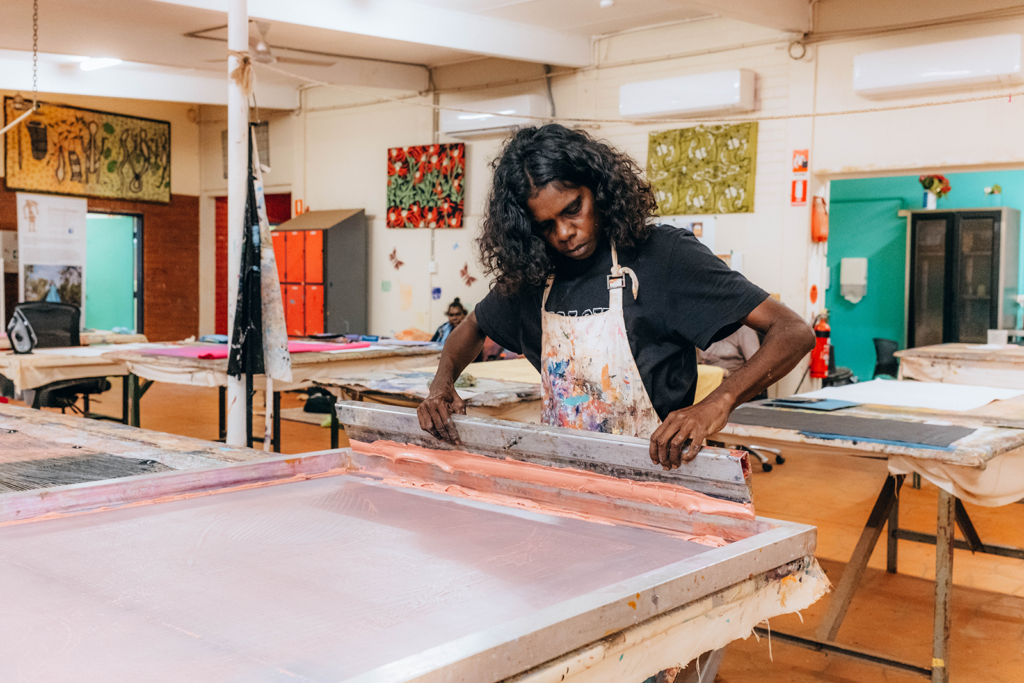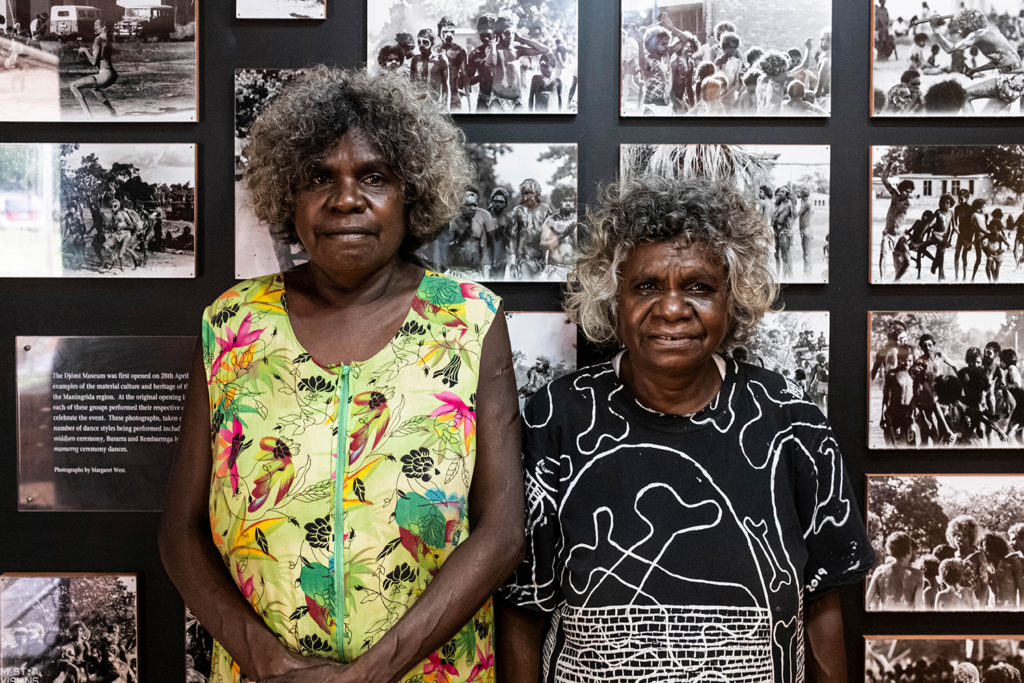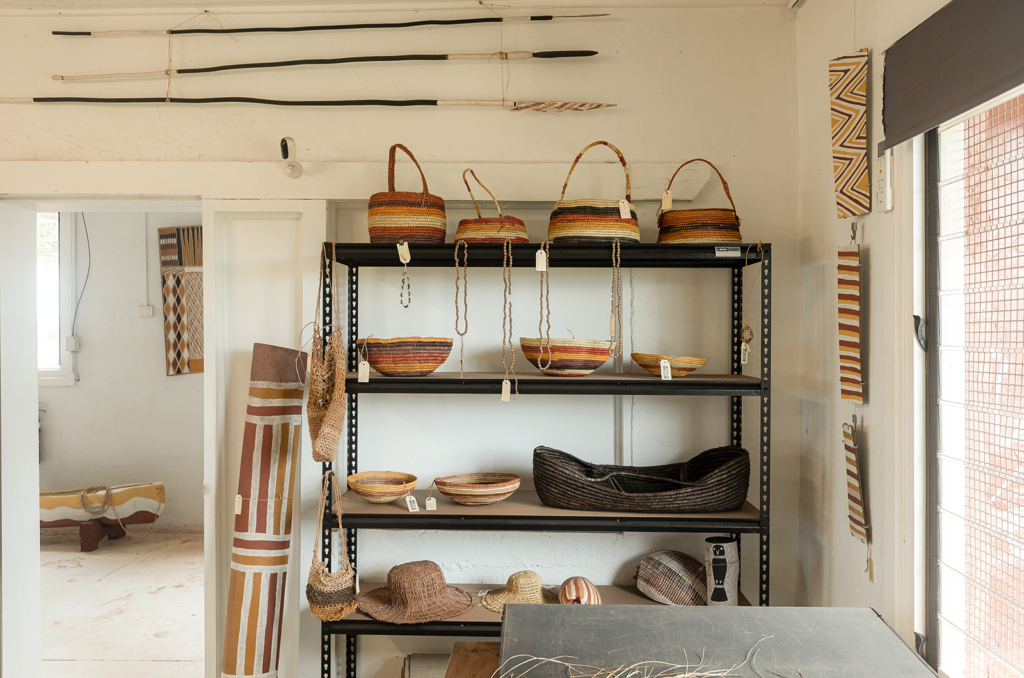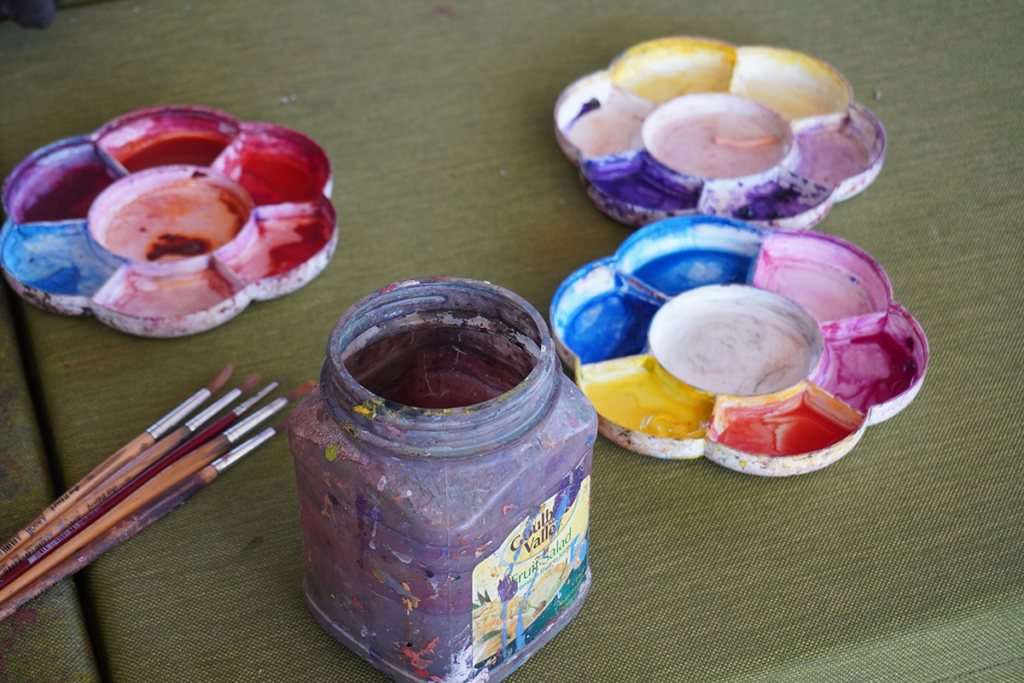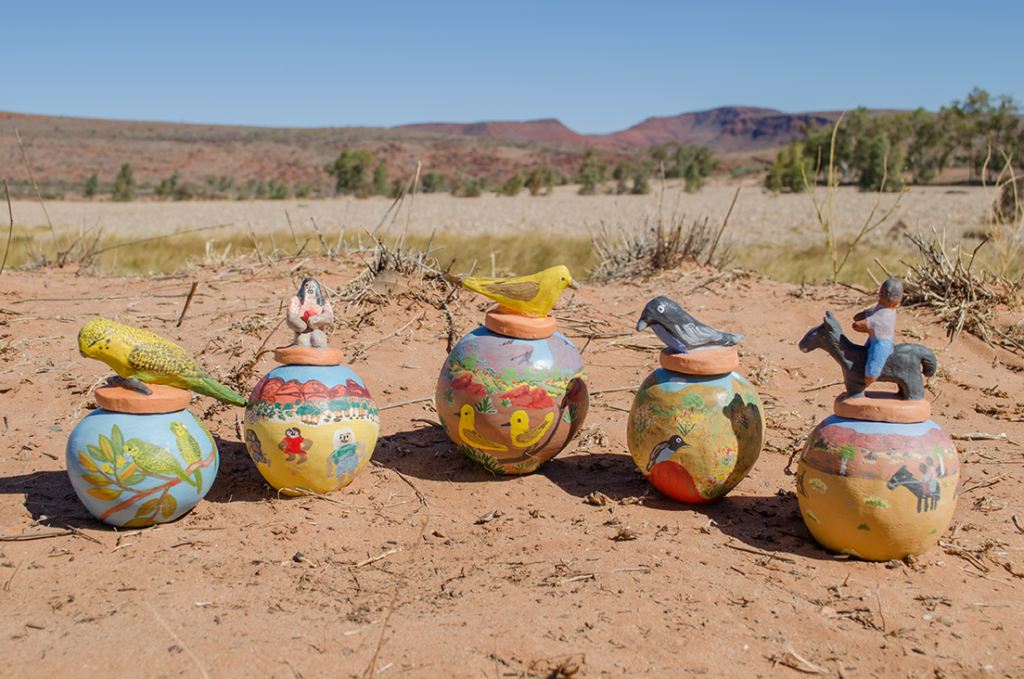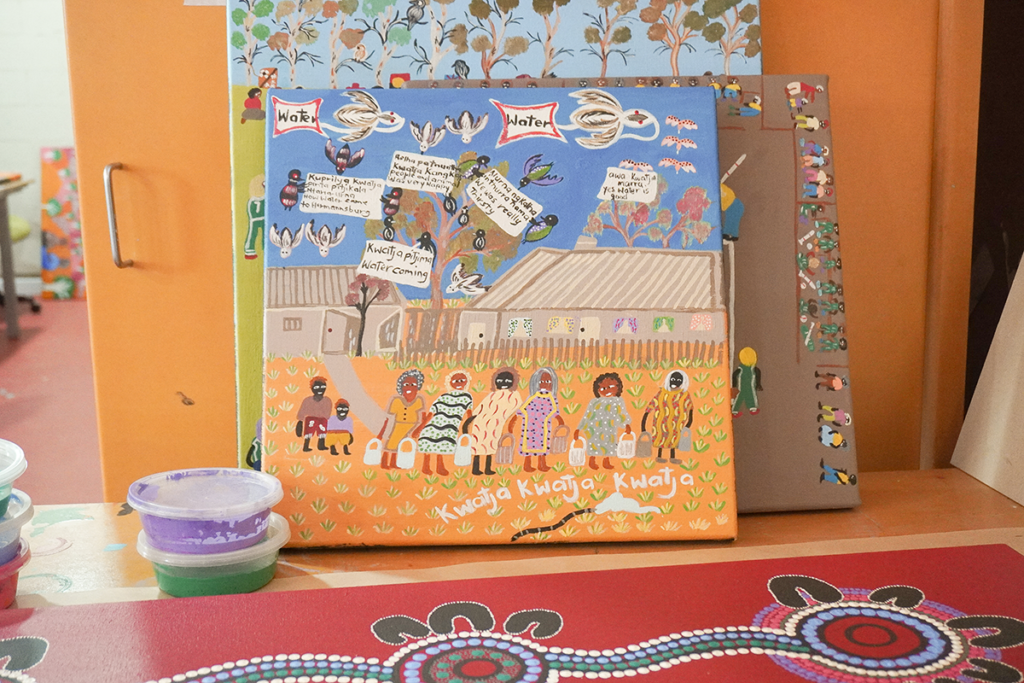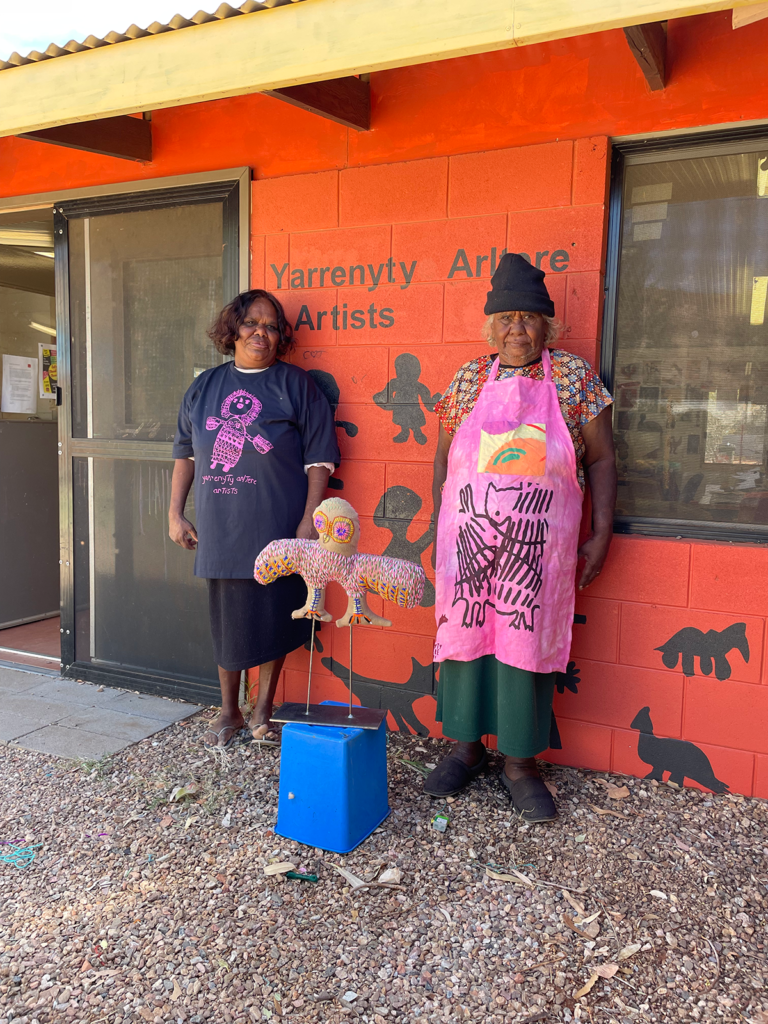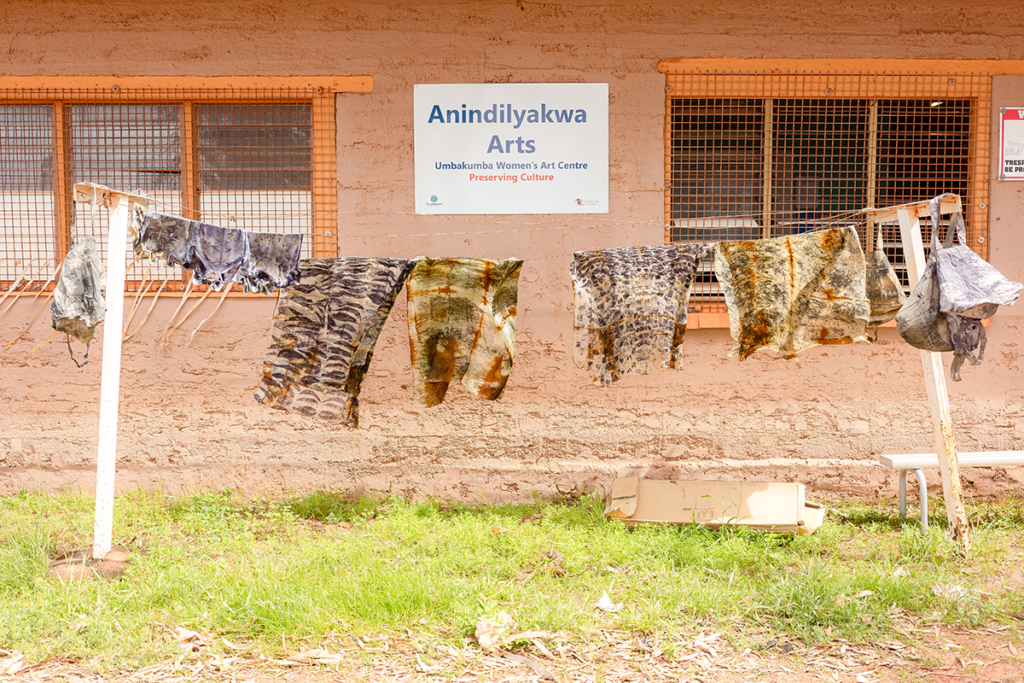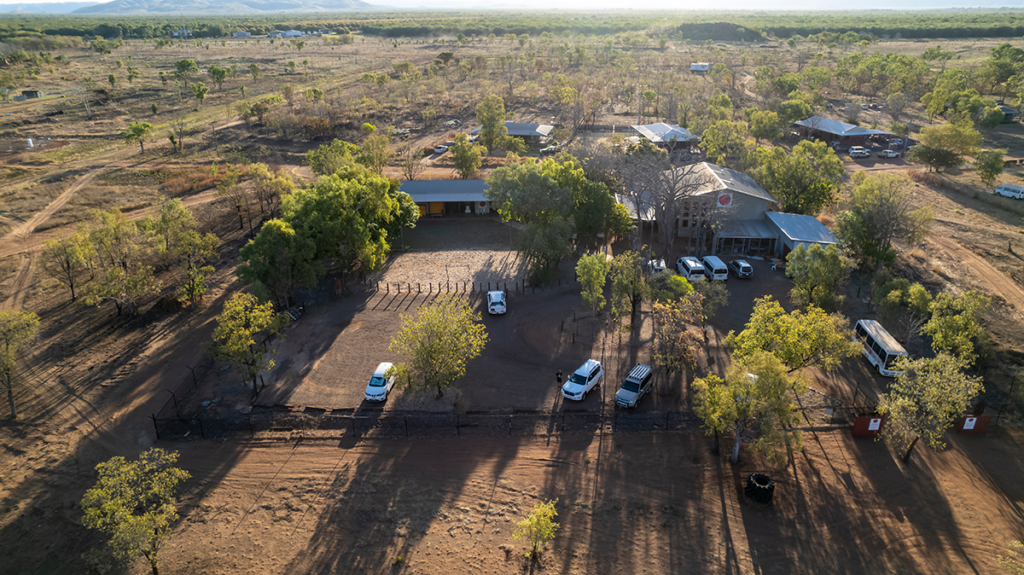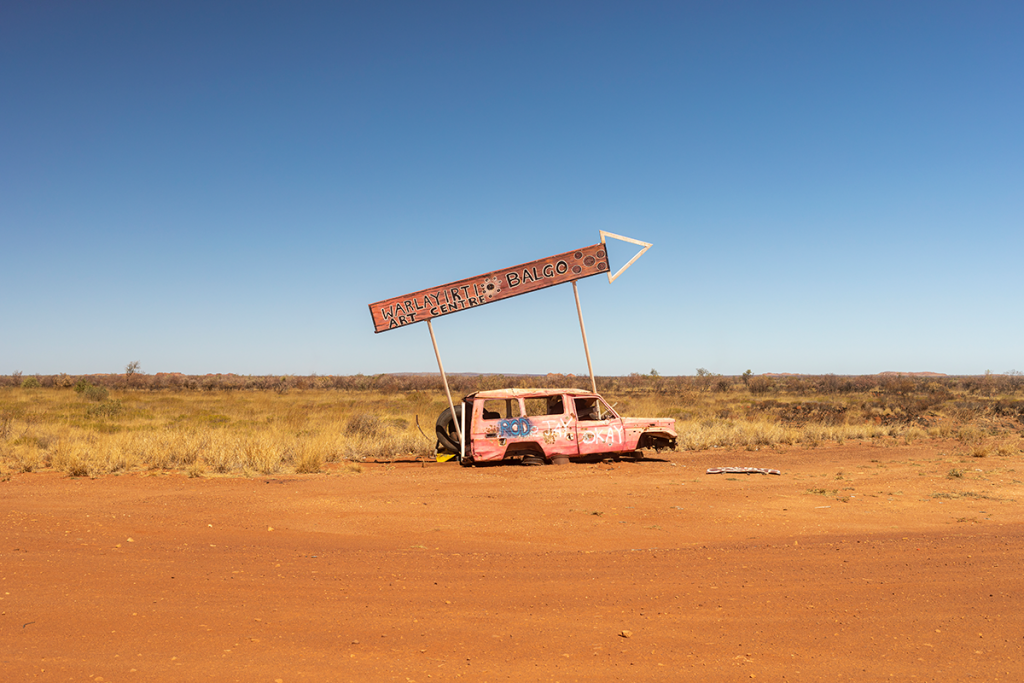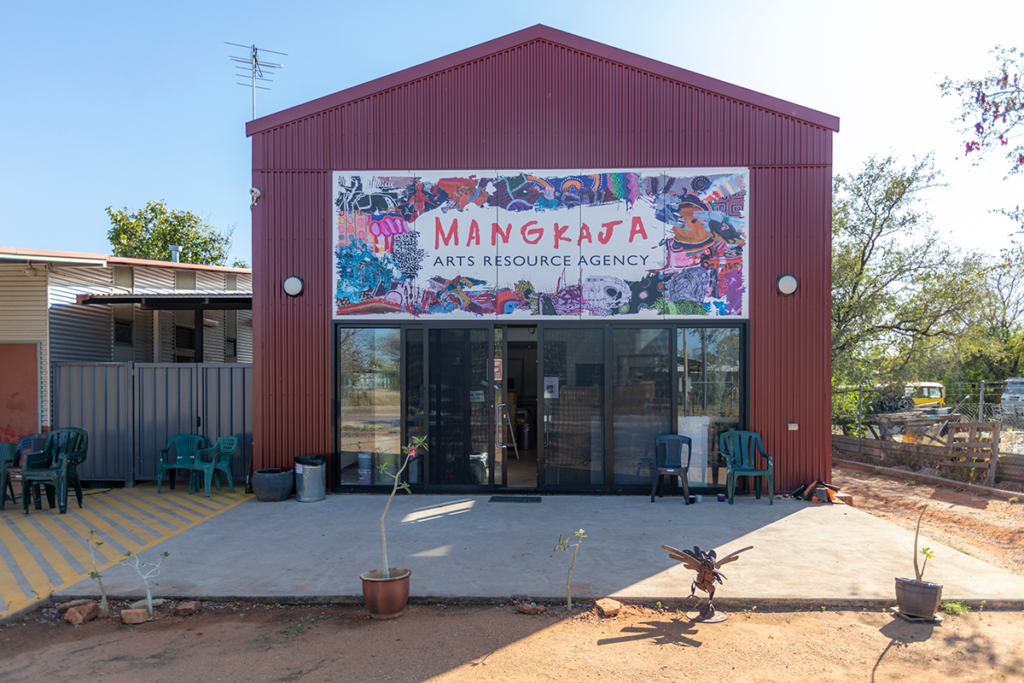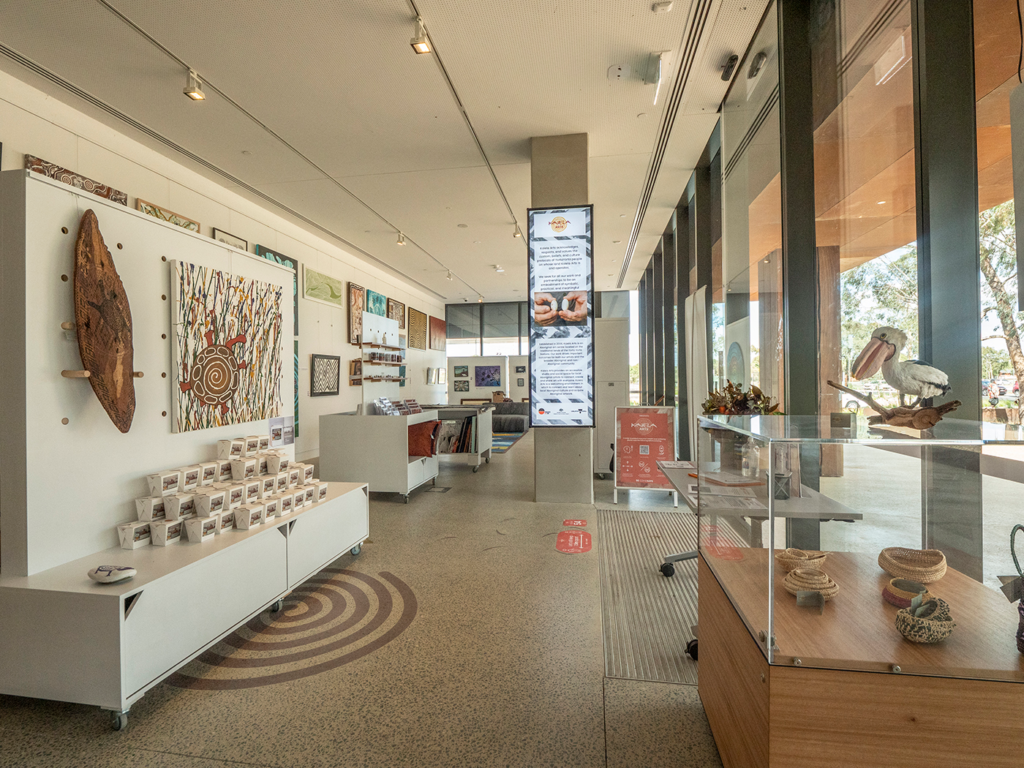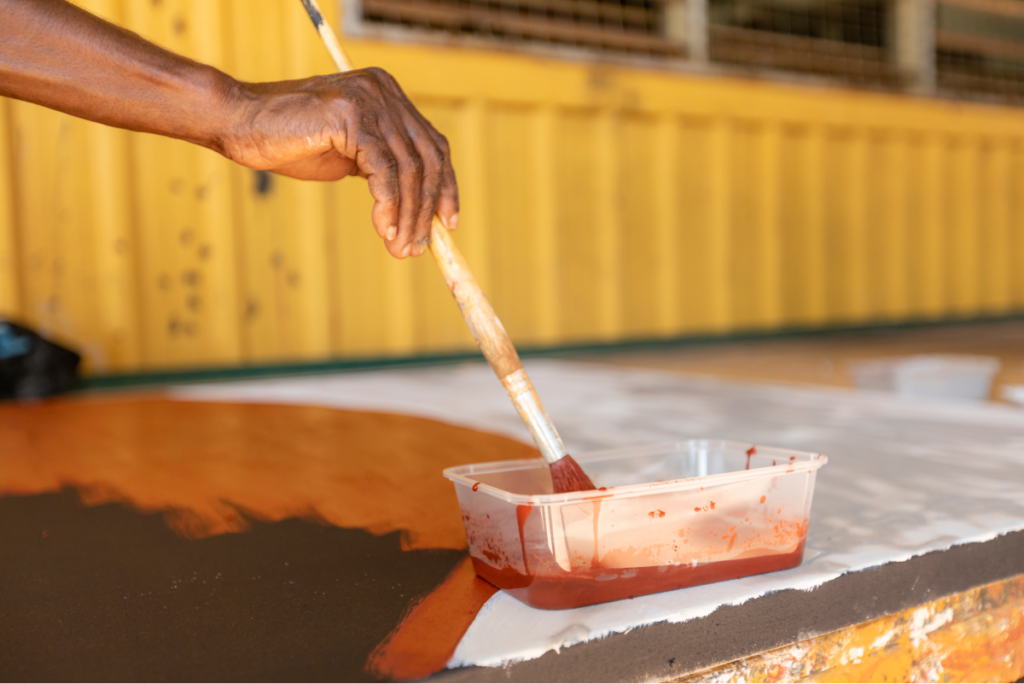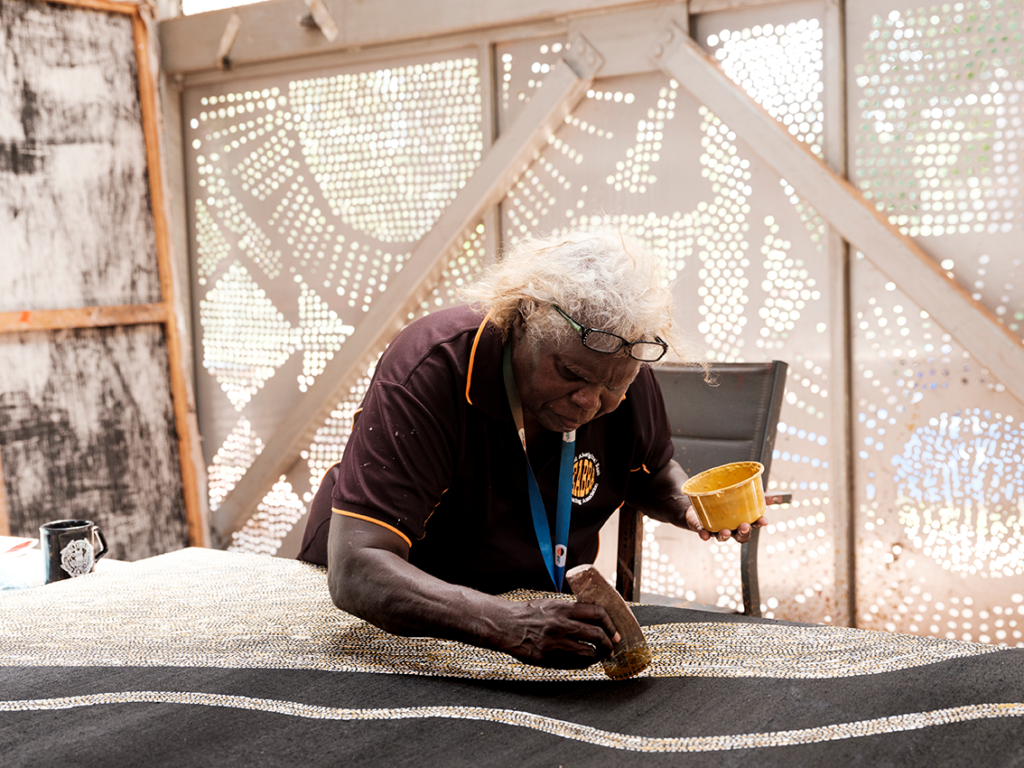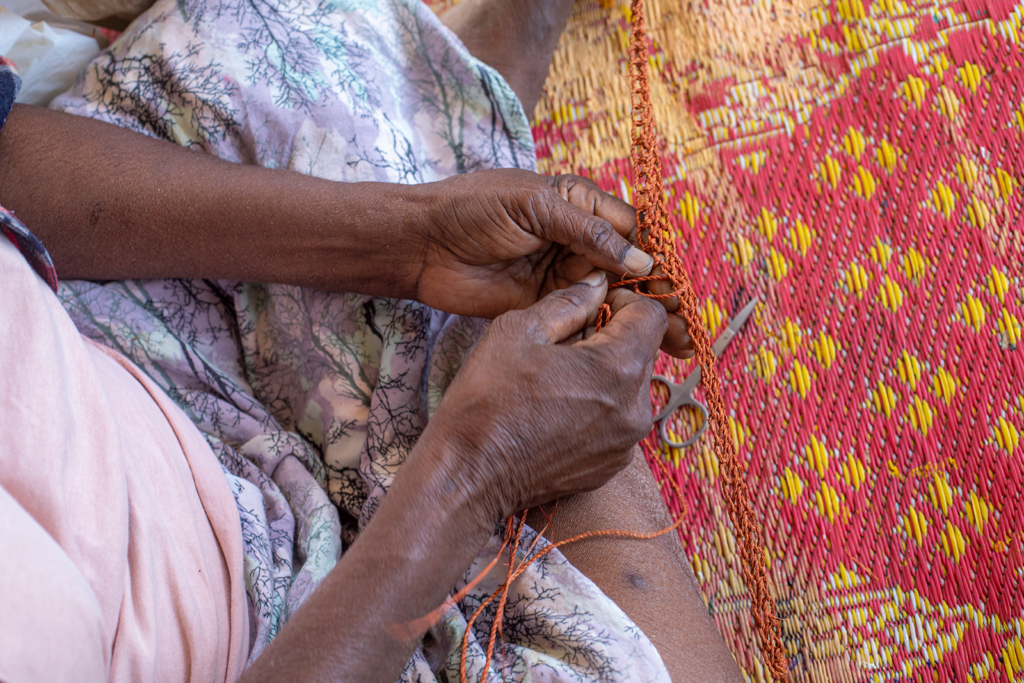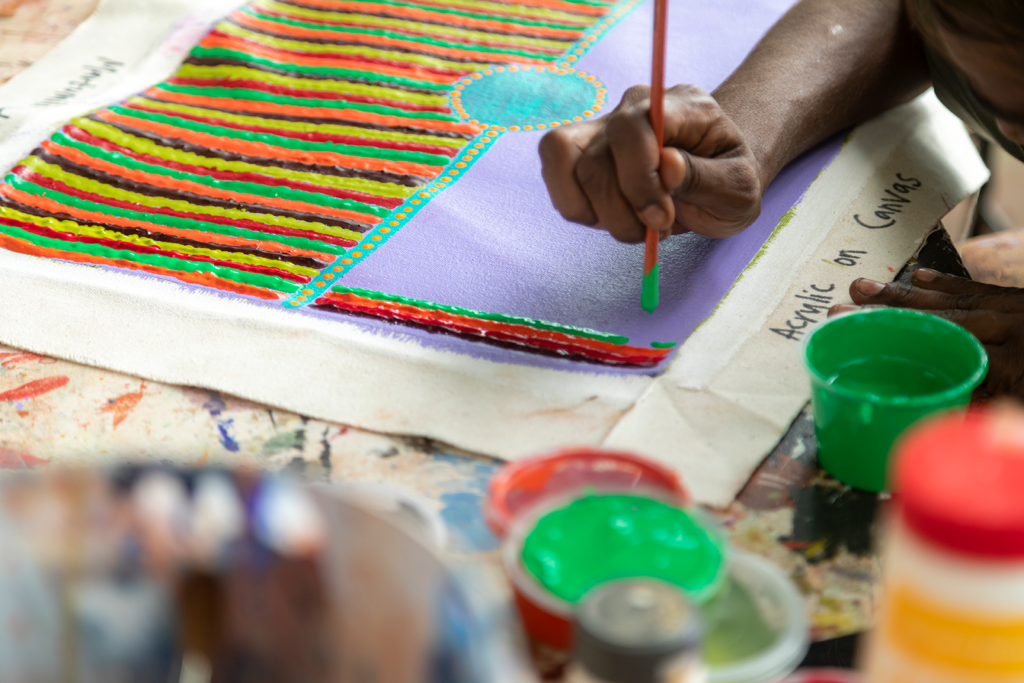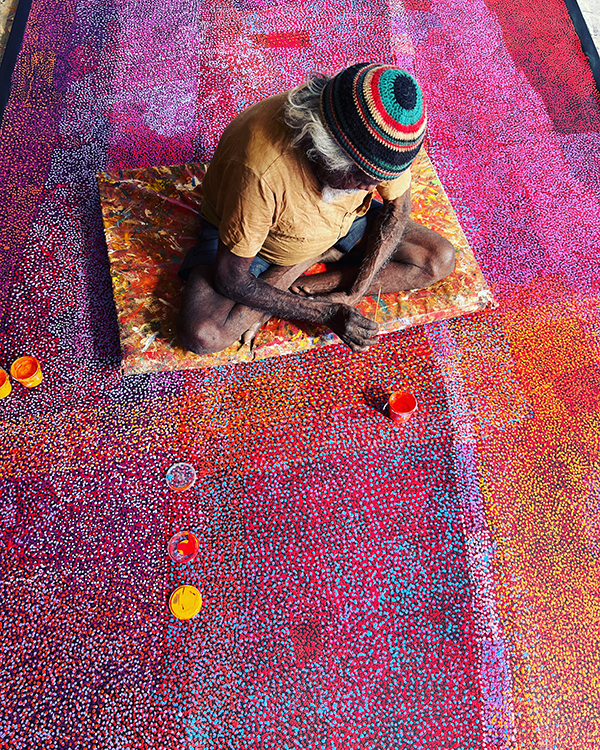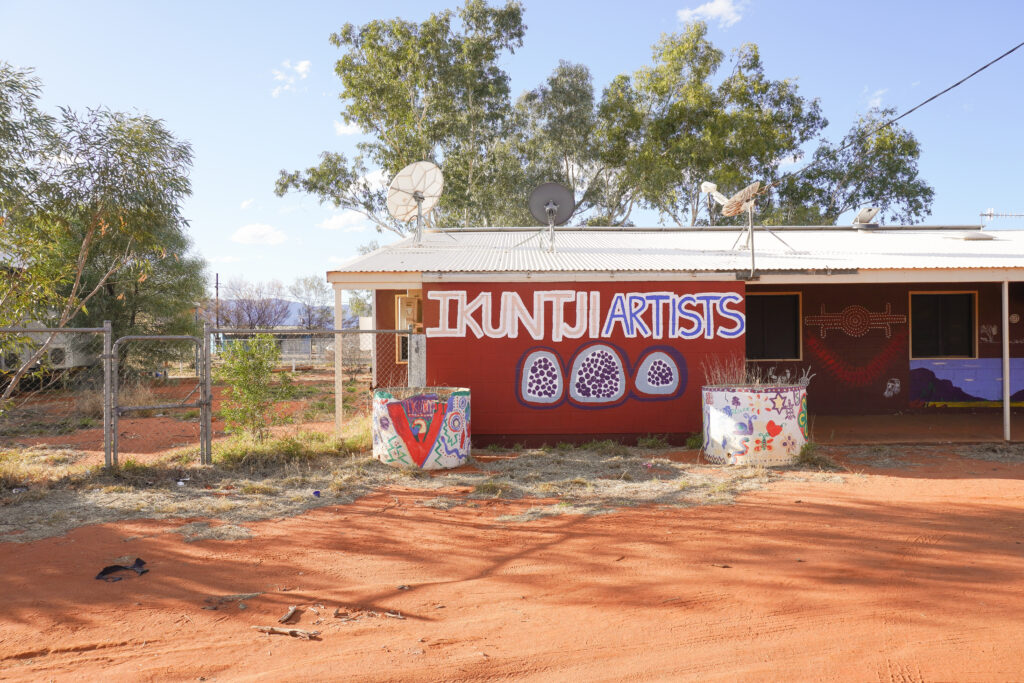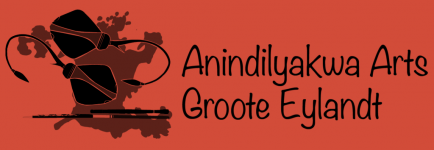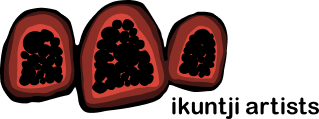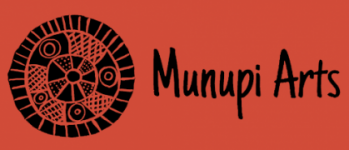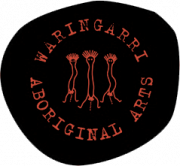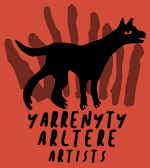Art, Culture, Country
Partnering with remote Indigenous Art Centres to deliver a landmark digital project that empowers Aboriginal and Torres Strait Islander artists to create and share unique arts and cultural experiences with the world.


Art, Culture, Country
Partnering with remote Indigenous Art Centres to deliver a landmark digital project that empowers Aboriginal and Torres Strait Islander artists to create and share unique arts and cultural experiences with the world.

Rrambaŋi (Gunga Mat)
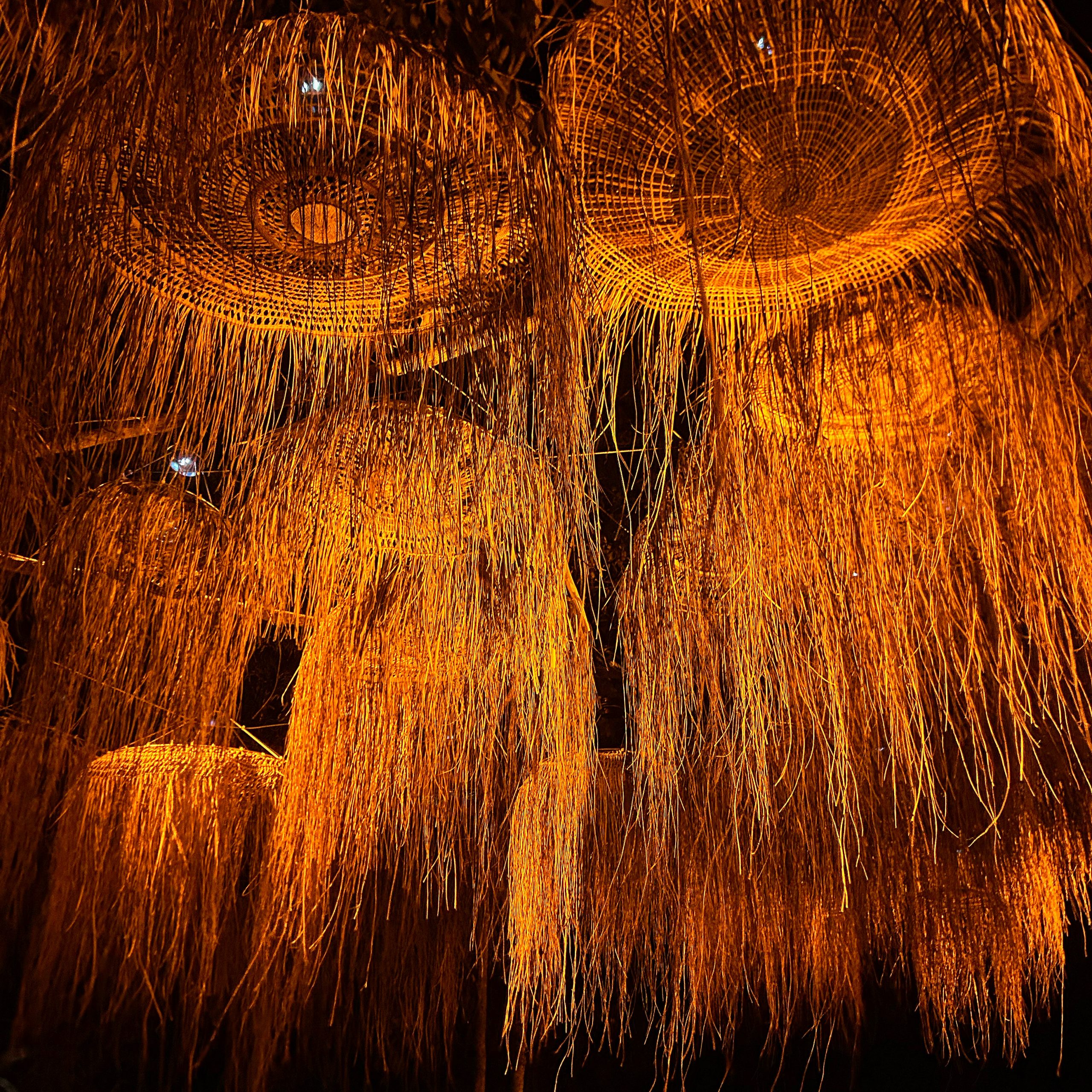
Fibre art holds a deep and venerated tradition within Yolŋu culture and the weavers of Arnhem Land, with the core material used being Gunga (Pandanus spiralis). The Rrambaŋi (Gunga Mat) installation at the 2023 Garma Festival showcased the commitment to excellence of fibre artists from East Arnhem Land who are here represented by Gapuwiyak Culture and Arts and Bula Bula Arts in Ramingining.
Traditionally, Yolŋu made mats in a conical shape called- Nganiyal. These were very light and were used as a portable structure for several purposes. When they were placed upright, they acted like a tent and babies were put under these to protect them from insect bites and as a calming space for sleeping. These mats were also used for ceremonial purposes as well as to lie under to heal.
When folded flat, they acted as a sitting mat or even as a modesty shield worn around the shoulders or waist. Sometimes they were used as a working surface for cooking. Nowadays, artists weave many different shapes including flat, round and oblong.
The traditional woven material for Nganiyal is gunga (Pandanus Spiralis). Weavers go to the bush and collect fresh leaves from the pandanus tree and strip away the spiky edges leaving the flexible fibres for the weaving process.
The fibres were left natural. Dying the pandanus is a relatively recent development for Yolngu. It is believed the use of colours was encouraged by the missionaries who introduced the Yolngu to dying techniques using Western dyes. After seeing this new method, Yolŋu adapted their knowledge of the bush materials to created their own palette of colours. These colours can differ across Arnhem Land, depending on what are available on Country. The most common dyes include:
Yellow-orange: the bright orange roots of the Pognolobus reticulatus bush)
Brown: the red bulb of Haemadorum breviculae grass)
Green: the growing shoot of the pandanus itself (Pandanus spiralis), boiled with the ashes of pandanus leaves.
Purple-pink: the seeds of the Haemodorum coccineum plant, related to Kangaroo Paw
Grey-Black: the leaves of the quinine bush, Petalostigma pubescens
Source: Louise Hamby (ed.) “Twined Together”.
It is also believed that the change from conical to flat mats was due to the encouragement by the missionaries and these shapes are now the contemporary way Yolngu weave mats.
The Japanese have a word, untranslatable in both English language and Yolŋu Matha, called Komorebi, pronounced kō-mō-leh-bē. This literally means “sunlight leaking through trees”. The word describes the beauty and wonder of rays of light dappling through overhead leaves, casting dancing shadows on the forest floor. This description was the inspiration for the woven canopy installation at the 2023 GARMA Festival.
Yolngu also recognised the feeling one gets from being under the Nganiyal due to the filtered sunlight -the feeling of calm and quiet; it has a meditative effect, and it feels special to be under the weavings. Bula’Bula Arts, along with our neighbours Gapuwiyak Arts and Culture, provided Agency with 50 woven mats to create the canopy or the modern day Nganiyal. Designers Fiona Scanlon and Luke Aulich then created the frame to which the weavings were affixed.
Attendees to the festival could walk, lie or sit under the canopy and feel the sensations of the filtered light. The fringes of the mats gently moved with the wind, adding to the mediative and healing feeling of being under the mats.
The woven canopy is a beautiful present day application of Yolŋu weaving, and what better place to showcase this than at Garma, a 4-day celebration of Yolŋu life and culture held in remote northeast Arnhem Land.
UPLANDS is an immersive digital project that has been designed to celebrate Indigenous Art Centres and share Aboriginal and Torres Strait Islander artistic and cultural practices with the world.
This large scale immersive digital mapping project features over twenty remote Indigenous Art Centres, and interviews with over 150 Indigenous artists and arts workers from across the country.
UPLANDS is a project by Agency and has been funded by the Australian Government through the Restart to Invest, Sustain and Expand (RISE) program and the Indigenous Visual Art Industry Support (IVAIS) program.
Government Partners


Acknowledgement of Country
We acknowledge the Traditional Owners and Sovereign Custodians of the land on which we live and work. We extend our respects to their Ancestors and all First Nations peoples and Elders past, present, and future.
